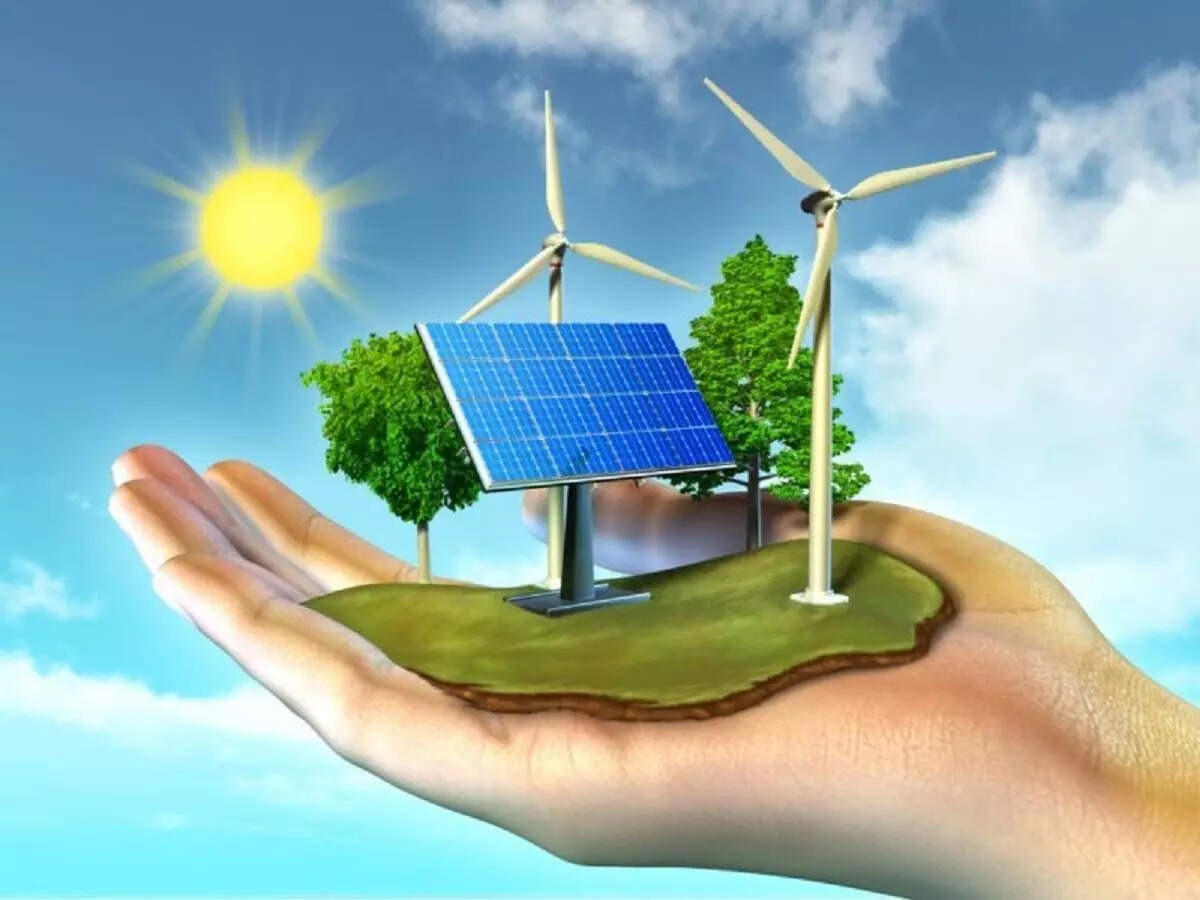Renewable Energy 101: Harnessing Nature’s Power for Homes and Businesses in India
As the world seeks sustainable alternatives to fossil fuels, renewable energy sources have emerged as vital solutions. These energy sources are not only environmentally friendly but also hold great potential for homes and businesses in India. Let’s explore the main types of renewable energy: solar, wind, hydro, biomass, and geothermal, and understand how they can power our daily lives.

Solar Energy
What is Solar Energy?
Solar energy harnesses the power of the sun through photovoltaic (PV) panels that convert sunlight directly into electricity. Solar thermal systems can also be used to generate heat.
Generation Process
PV panels contain semiconductor materials that generate electric currents when exposed to sunlight. These currents are then converted into usable electricity.
Potential for Homes and Businesses
India, with its abundant sunlight, is ideal for solar energy. Rooftop solar panels are becoming common in urban areas, providing a cost-effective solution for homes and businesses. Solar farms are also being developed on a larger scale to contribute to the grid.
Wind Energy
What is Wind Energy?
Wind energy is generated by converting the kinetic energy from wind into electricity using wind turbines. These turbines have large blades that capture wind energy and spin a rotor connected to a generator.
Generation Process
Wind turns the turbine blades around a rotor, which spins a generator to create electricity.
Potential for Homes and Businesses
In India, regions like Gujarat and Tamil Nadu have high wind potential. For homes and small businesses, small wind turbines can be installed to supplement electricity needs, especially in rural areas where grid access is limited. Larger businesses and industrial units can invest in wind farms or partner with wind energy companies to reduce energy costs and carbon footprint.
Hydro Energy
What is Hydro Energy?
Hydro energy, or hydropower, harnesses the energy of flowing water to generate electricity. This is typically done using dams on large rivers, where water flow drives turbines connected to generators.
Generation Process
Water released from the reservoir flows through turbines, generating electricity.
Potential for Homes and Businesses
India has a rich network of rivers, making hydropower a significant energy source. While large-scale hydro projects are common, small-scale hydro systems (known as micro-hydro) can be deployed in remote areas to power villages or small communities. Businesses near rivers can explore mini-hydro projects to ensure a reliable and green energy supply.
Biomass Energy
What is Biomass Energy?
Biomass energy is produced from organic materials such as agricultural waste, wood, and even municipal waste. This biomass is burned or converted into biogas to generate electricity or heat.
Generation Process
Biomass can be burned directly in boilers to produce steam that drives turbines, or converted into biogas through anaerobic digestion, which can then be used to generate electricity.
Potential for Homes and Businesses
In rural India, where agricultural waste is abundant, biomass energy can be a valuable resource. Small-scale biogas plants can power homes and small businesses, providing an efficient way to manage waste and generate energy.
Geothermal Energy
What is Geothermal Energy?
Geothermal energy comes from the heat stored beneath the Earth’s surface. This heat can be accessed by drilling wells to tap into hot water or steam reservoirs, which then drive turbines to generate electricity.
Generation Process
Wells are drilled into geothermal reservoirs to bring hot water or steam to the surface, which then spins turbines connected to generators.
Potential for Homes and Businesses
Geothermal energy is still in its nascent stage in India. However, areas with geothermal activity, such as parts of the Himalayas and the Western Ghats, have potential. For homes, geothermal heat pumps can be used for heating and cooling, offering a sustainable and cost-effective solution. Businesses, particularly in the hospitality and spa industries, can use geothermal resources for heating water and providing a unique eco-friendly experience to customers.
Renewable Energy in India’s Energy Mix
As of recent data, renewable energy contributes significantly to India’s total electrical energy generation. Here's a comparison:
- Solar Energy: Approximately 10% of India's total electricity generation.
- Wind Energy: Around 10% of total generation.
- Hydro Energy: Contributes about 12% of the total generation.
- Biomass Energy: Accounts for around 2% of the total generation.
- Geothermal Energy: Still under development with minimal contribution currently.
The Future of Renewable Energy in India
India’s commitment to renewable energy is growing, supported by government initiatives like the National Solar Mission and incentives for renewable energy projects. Transitioning to renewable energy not only addresses climate change but also ensures energy security and economic growth.
Benefits of Renewable Energy:
Environmental Impact: Reduces greenhouse gas emissions and pollution.
Energy Independence: Decreases reliance on imported fuels.
Economic Growth: Creates jobs in renewable energy sectors.
Cost Savings: Lower operational costs in the long run due to minimal fuel costs.
Conclusion
Renewable energy offers immense potential for transforming India’s energy landscape. Solar, wind, hydro, biomass, and geothermal energy sources provide viable options for both homes and businesses, contributing to a sustainable and self-reliant future. As technology advances and investments grow, the dream of a green India powered by renewable energy is becoming a reality.
Harnessing nature’s power is not just an environmental necessity but also an economic opportunity. Embracing renewable energy can pave the way for a brighter, cleaner, and more prosperous India.




Post a Comment